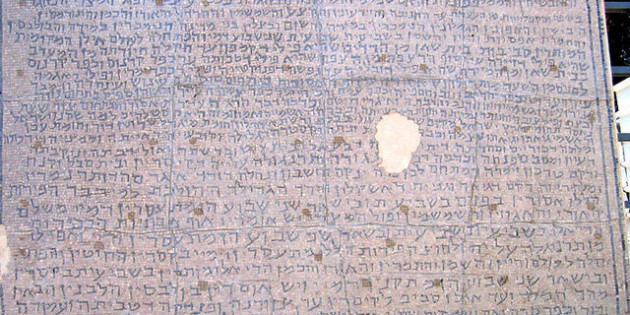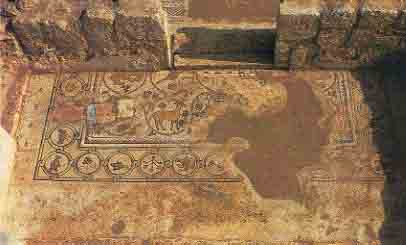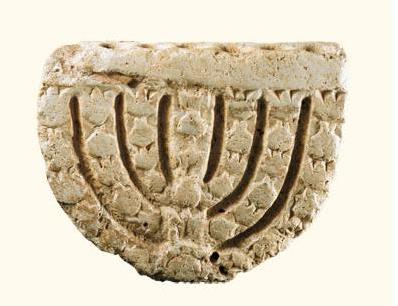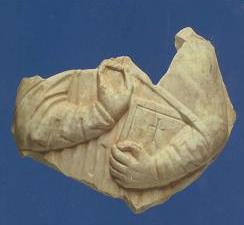Home » Archives for September 2008
Archive for September, 2008
The oldest known Talmudic inscription The synagogue of Rehov was excavated by Fanny Vitto of the then-Israel Department of Antiquities and Museums between 1974-80. The synagogue of Rehov was built in three phases, consisting of a 4th century basilica, enlarged in the 5th-6th centuries, and destroyed as it was being enlarged and renovated during the […]
The earliest manuscripts of Rabbinic literature date to the middle ages, hundreds of years after many of the cardinal documents of the “Oral Torah” were initially promulgated. For example, the Mishnah, the basic document of the Rabbinic corpus, was completed around 200 CE. Fragments of the Mishnah that date to the 9 th -12 th centuries CE were […]
Bronze Censer Bowl Found in Jericho, this bronze censer-bowl is suspended from a chain decorated with crosses. The Burning of incense played an important role in early Christian ritual, and many censers have come to light in excavations. The censers were swung during ceremonies, which fanned the coals and caused the scent of incense to […]
The Passfield White Paper Click here to view the complete document. Introductory Statements, pp. 3-11 “…in the peculiar circumstances of Palestine no policy, however enlightened or however vigorously prosecuted, can hope for success, unless it is supported not merely by the acceptance, but by the willing cooperation of the communities for whose benefit it is […]
Mosaic Inscription Mosaic inscription in Greek from the Armenian monastery north of the Damascus Gate, Jerusalem, late 6th-early 7th century- “In the days of Silvanus, the god-beloved deacon and abbot, the present [mosaic inlay] was done and the apse and annex of the church, of…[cubits length] and of six cubits height. Remember me O Lord […]
Martyrius Monastery Four miles east of Jerusalem on a hilltop in the Judean desert on the road to Jericho sits Ma‘ale Adummim, a modern city of over 20 thousand people. In its midst is one of the largest, most important and most elaborate ancient monasteries in the Holy Land—the monastery of the fifth-century monk Martyrius. […]
Hammat Tiberias Menorah. Photo courtesy of the Israel Museum. Stone menorah from the ancient Hammat Tiberias Synagogue, 4th-5th century CE In 1920, when the road between Tiberias and Zemach was being paved, the workers came across some startling finds which made them stop in their tracks – they had unearthed the ancient town of Hamat […]
Capitol Decorated with a Menorah Synagogue at Caesarea 6th century Marble Israel Antiquities Authority, Exhibited at the Israel Museum, Jerusalem Cradle of Christianity- Treasures from the Holy Land. Beachwood, Ohio- Maltz Museum of Jewish Heritage, 2006.
Capital Decorated with a Cross Church at Matzuba, Galilee 6th century Marble Israel Antiquities Authority, Exhibited at the Israel Museum, Jerusalem Cradle of Christianity- Treasures from the Holy Land. Beachwood, Ohio- Maltz Museum of Jewish Heritage, 2006.
Relief from Hanita Fragmentary relief depicting a figure, possibly Jesus, in a gesture of blessing. Hanita, Galilee 6th century Marble Israel Antiquities Authority Cradle of Christianity- Treasures from the Holy Land. Beachwood, Ohio- Maltz Museum of Jewish Heritage, 2006.









